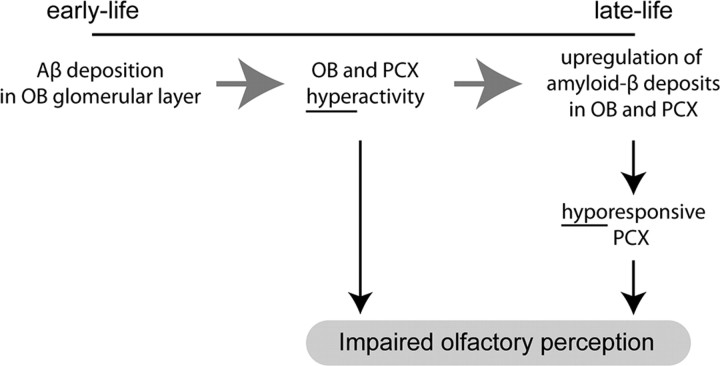Figure 6.
Working model for how β-amyloidosis contributes to olfactory network dysfunction and perceptual impairments. Based on the findings uncovered throughout this study, we propose the following working model for how progressive β-amyloidosis throughout the olfactory system contributes to olfactory network dysfunction and perceptual impairments. Early life (3 months) Aβ deposition within the initial synaptic layer of the OB results in hyperactivity within the OB network, which through either direct (enhanced synaptic input) or indirect [altering of PCX inhibitory (GABAergic) circuits] mechanisms increases activity in the PCX, thereby rendering the system unable to process odor information normally. Through established mechanisms over time, this hyperactivity upregulates Aβ production within both structures subsequently, resulting in a weakened, hyporesponsive state. Thus, different network states (hyperactive or hypoactive) can contribute to olfactory behavioral impairments more or less equally yet may indicate differential accumulation or involvement of Aβ.

